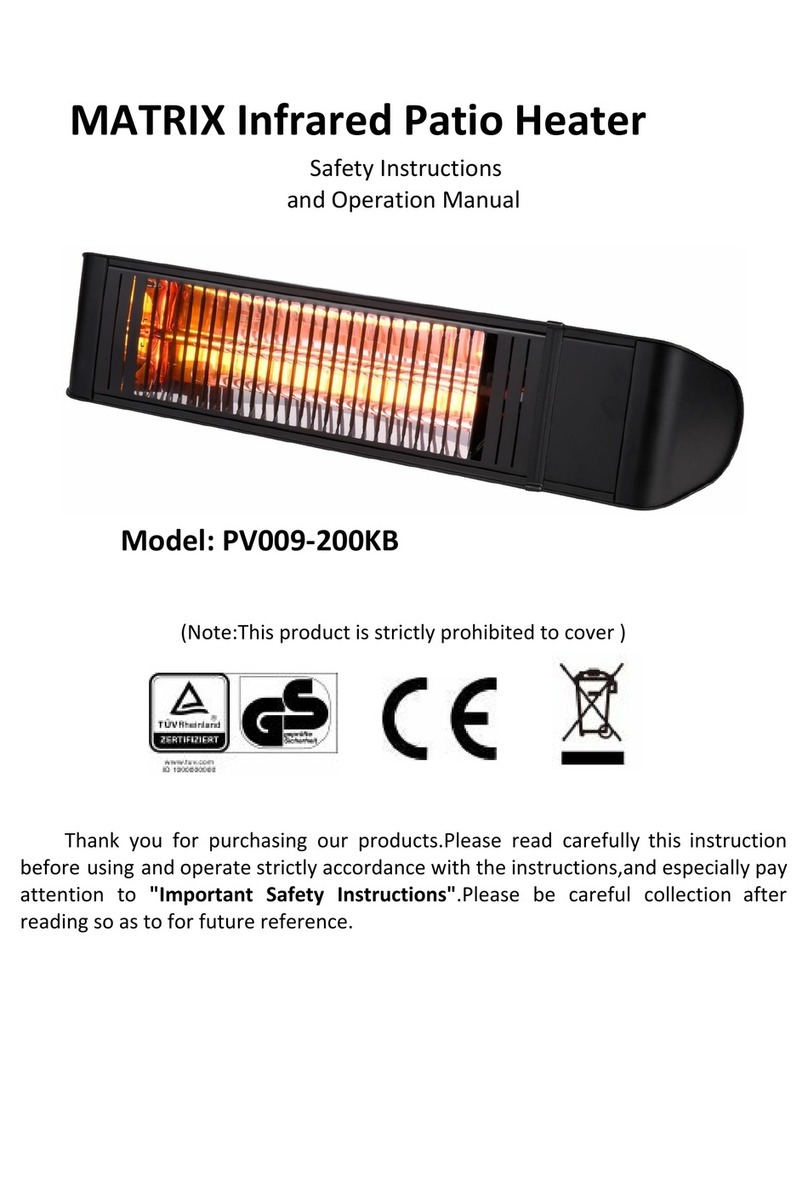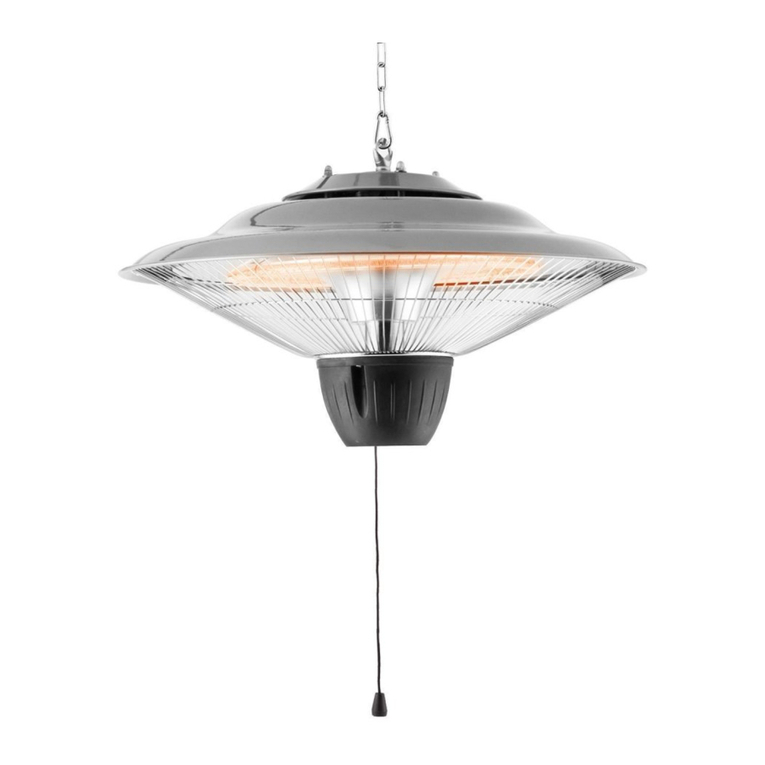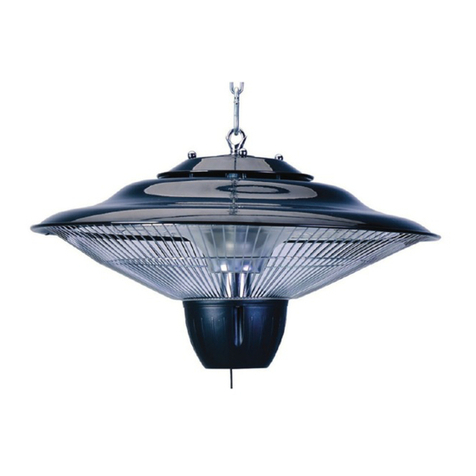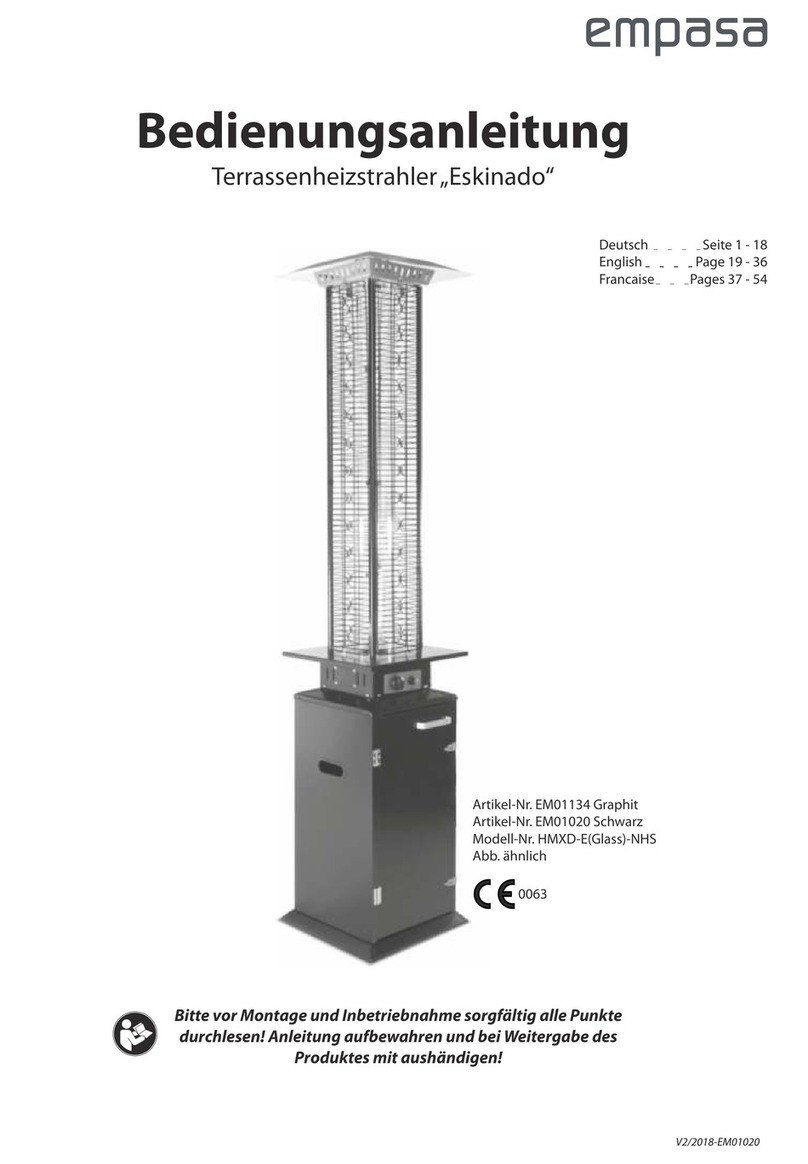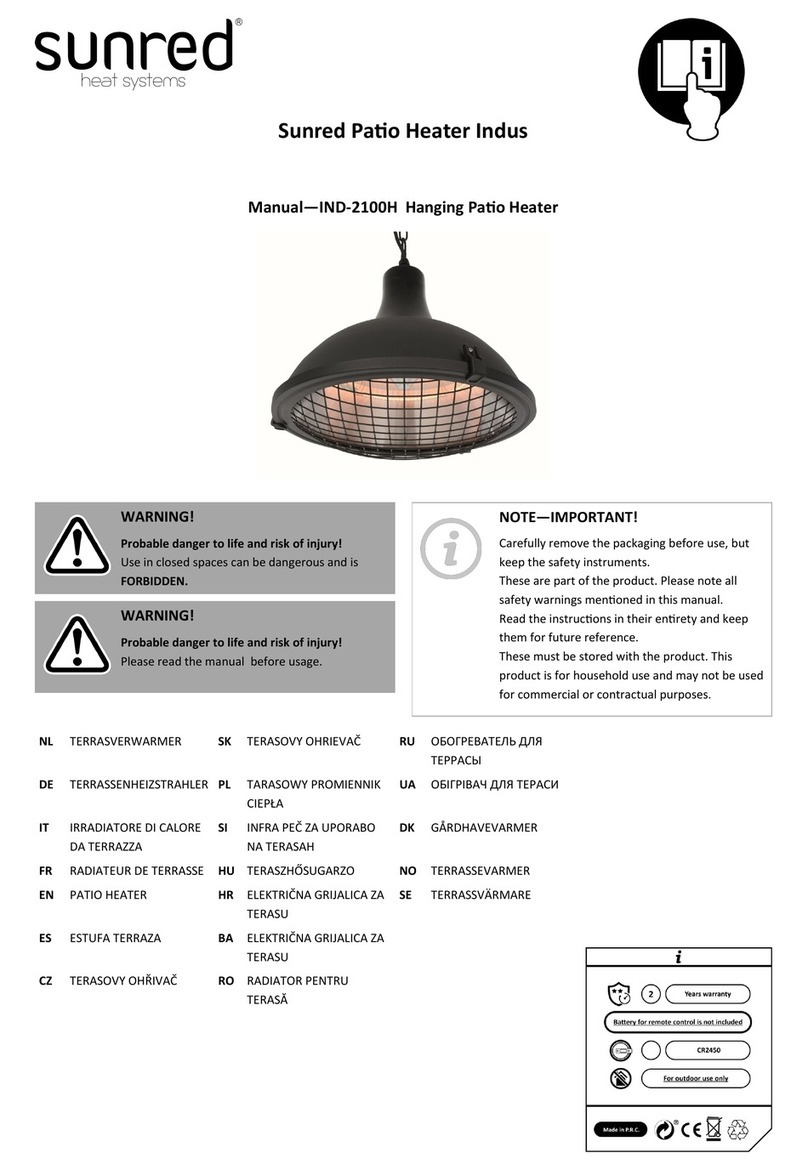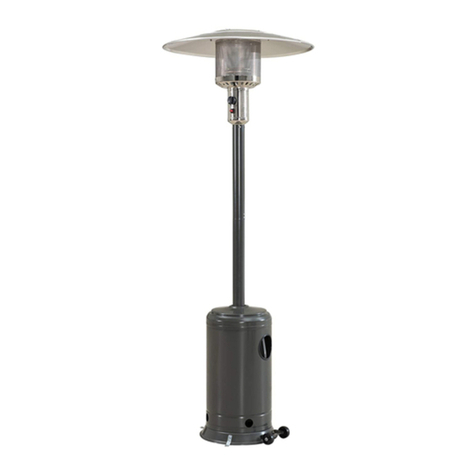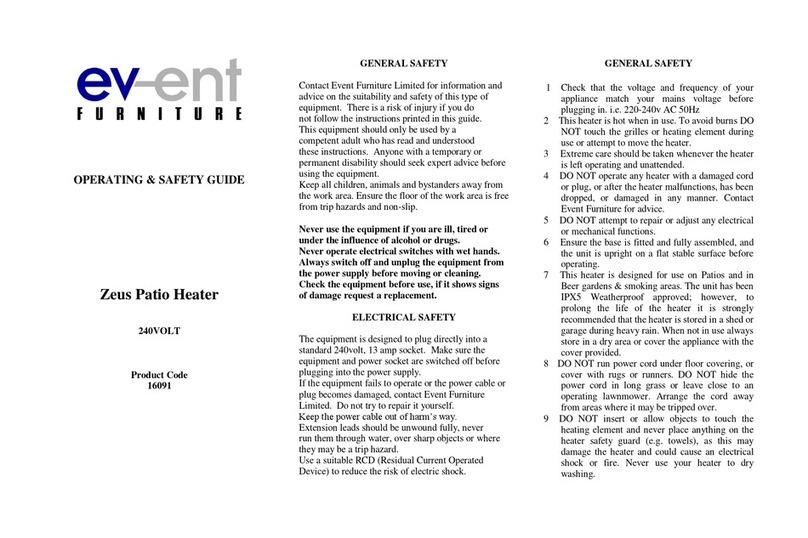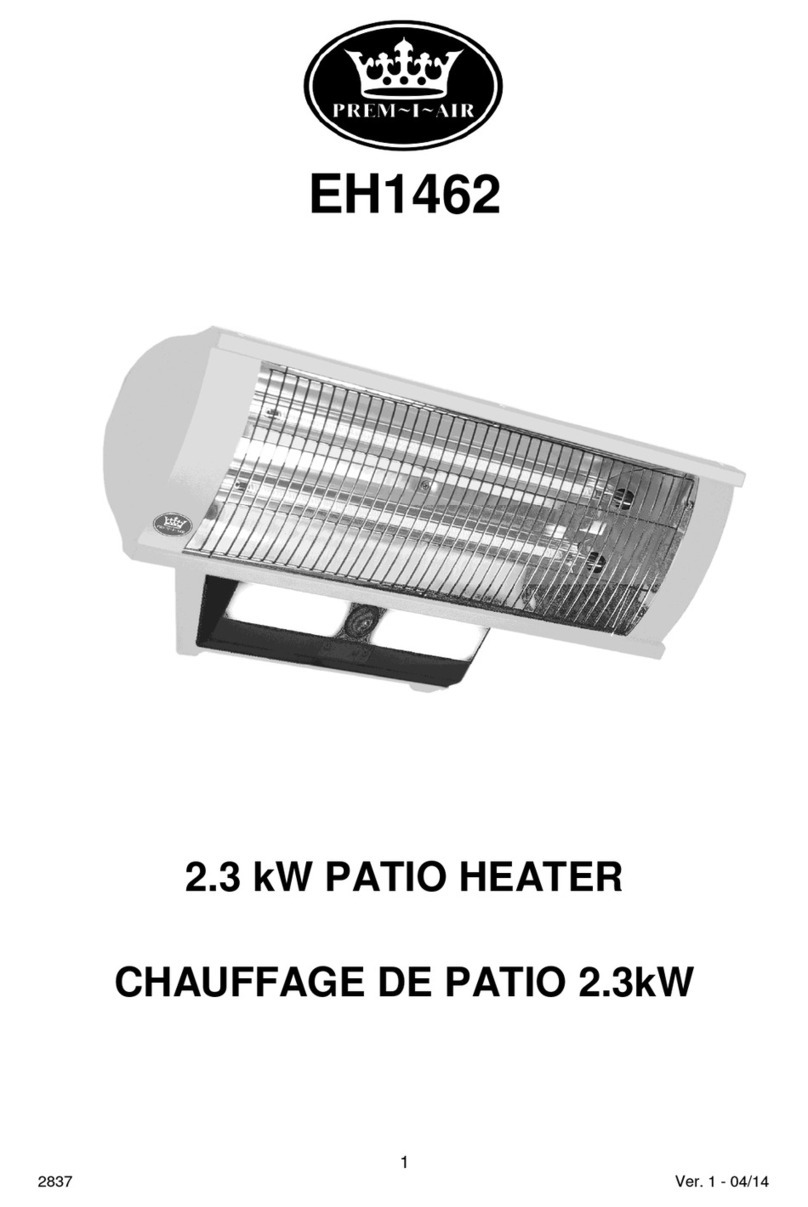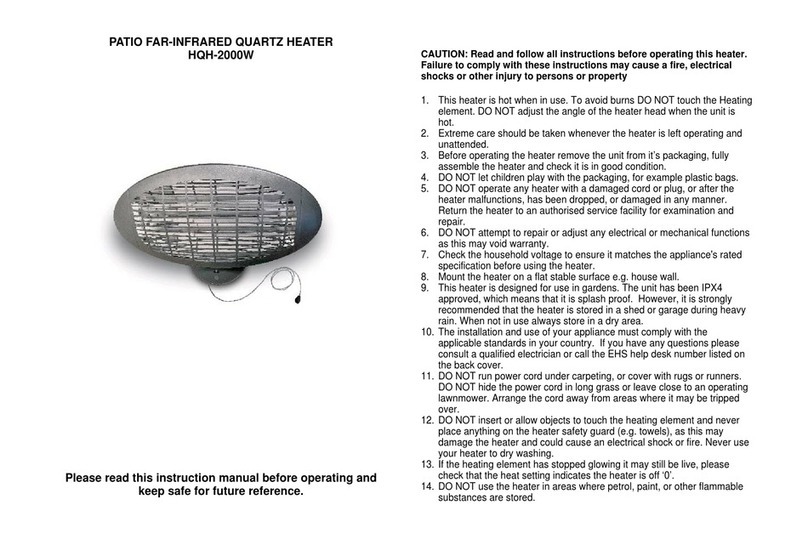3
OUTDOOR
CAMPUS
|
KORT
RIJKSESTEENW
EG
1266
|
9051
GENT
|
0032
55
23
26
48
|
[email protected] Warning
PLEASE READ CAREFULLY THE FOLLOWING SAFETY GUIDELINES BEFORE OPERATION.
BEFORE INSTALLATION AND OPERATION, PLEASE READ THE MANUAL CAREFULLY. REPAIRS
SHOULD ONLY BE CARRIED OUT BY QUALIFIED SERVICE PERSONNEL
⚫This appliance must be installed and the gas cylinder must be stored in accordance with the
regulations in force.
⚫Do not block the ventilation openings of the cylinder housing.
⚫Do not move the unit when in operation.
⚫Close the valve of the gas tank or the regulator before moving the unit.
⚫The pipe or the flexible hose must be changed within the prescribed intervals.
⚫Use only the type of gas and the type of cylinder specified by the manufacturer.
⚫In case of strong wind, special attention should be taken against tilting of the device.
⚫Do not use this device indoors, as it may cause personal injury or property damage.
⚫This outdoor heater is not intended to be installed on recreational vehicles and/or boats.
⚫The device must be placed on a solid surface.
⚫Maintenance and repair must be carried out by a qualified person.
⚫Improper installation, adjustment, modification may cause personal injury or property
damage.
⚫Do not attempt to modify the unit in any way.
⚫Never replace or modify the controller with a controller other than the factory suggested
replacement.
⚫Do not store or use gasoline or other flammable vapors or liquids in the heating unit.
⚫The entire gas system, hose, regulator, pilot light or burner must be checked for leaks or
damage before use and at least annually by a qualified service technician.
⚫All leak tests must be carried out using a soap solution. Never use an open flame to check for
leaks.
⚫Do not use the patio heater until all connections have been tested for leaks.
⚫Turn off the gas tap immediately if any smell of gas is detected.
⚫Do not transport the patio heater while it is in operation.
⚫Do not move the heater after it has been turned off until the temperature has cooled down.
⚫The control compartment, burner and circulation air of this patio heater must be kept clean.
⚫Frequent cleaning may be required as necessary.
⚫The LPG tank should be turned off when not in use.
⚫Check the heater immediately if any of the following situations occur:
- The heater does not reach the temperature.
- The burner makes a plopping noise during operation (a slight noise is normal when the
burner goes out).
- Odour of gas in combination with extreme yellow tops on the burner flames.
⚫The LPG regulator / hose assembly must be located in the tank cabinet where the LPG tank is
located.
⚫Any guards or other protective devices that have been removed for maintenance of
the stove must be replaced before the stove is used.
⚫Adults and children should stay away from high-temperature surfaces to avoid burns or
clothing dislocation.
⚫Children should be carefully supervised when they are in the area of the heater.
⚫Do not hang clothing or other flammable materials from or place them near the stove.
the stove.


